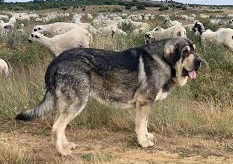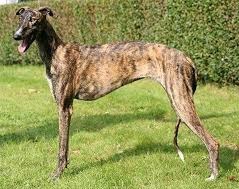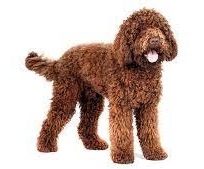DOGS - They have been man's pets for over 14,000 years. Dogs descended from the wolf family that roamed Europe, Asia, and North America. Scientists know that man and dogs have had a relationship for many years through their study of cave drawings, early pottery, and Asian ivory carvings.
Classifying dogs into categories began with the Romans.
They had the following categories:
Housedogs, Shepherd dogs, Sporting dogs, War dogs,
Dogs that ran by scent and Dogs that ran by sight.
Dogs vary greatly from breed to breed. The smallest breed
is the Chihuahua. It weighs only 4 pounds and is 5 inches
high at the shoulders.
The tallest breed is the Irish wolfhound. It is about thirty-nine inches tall at the shoulder. The St. Bernard is the heaviest dog. It can weigh about 200 pounds.
The Yorkshire terrier has hair that can be two feet long while other breeds may have no hair at all such as the Mexican hairless. The fur may be curly or straight.
Some dogs have two coats. The outer coat is long guard hairs and the undercoat is shorter and fluffy. These two coats protect the dog against rain and snow.
Some dogs have a long muzzle while others have flat faces such as the Pug. Many breeds have pointed ears that stand up. Others and pendulous ears than hang down. Some dogs have long legs such as the greyhound. Others are extremely short such as the basset hound and the dachshund. The chow chow even has a black tongue.
Even though all these dogs vary greatly in appearance, they are identical in anatomy. They have 321 bones and 42 permanent teeth. Most dogs are able to detect scents far better than humans. They can also hear high-pitched sounds.
Dogs mature by six months old. The smaller breeds usually mature before the larger breeds. Female dogs have a period of six to twelve days approximately twice a year when they are ready to mate. This is known as the season of heat.









